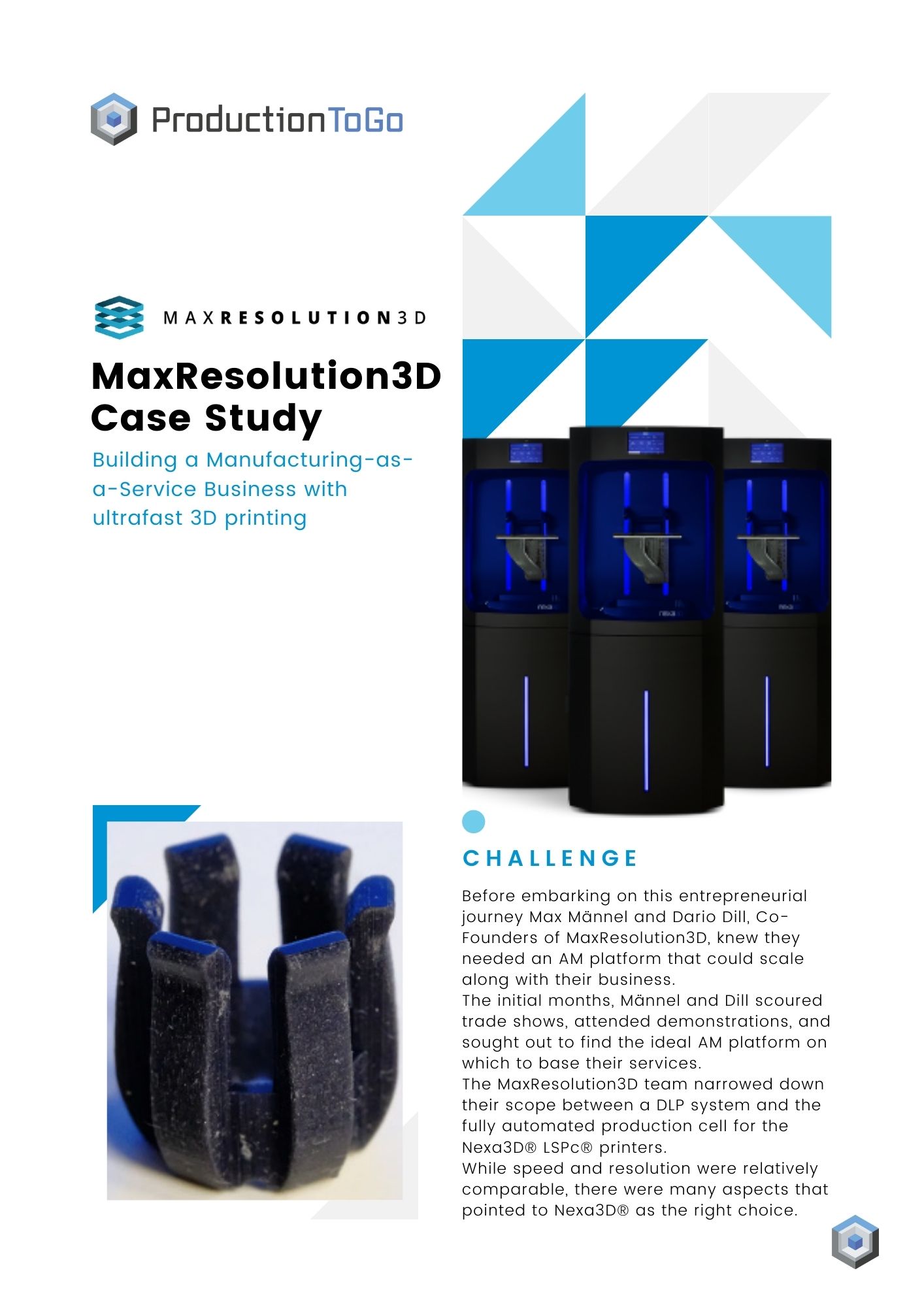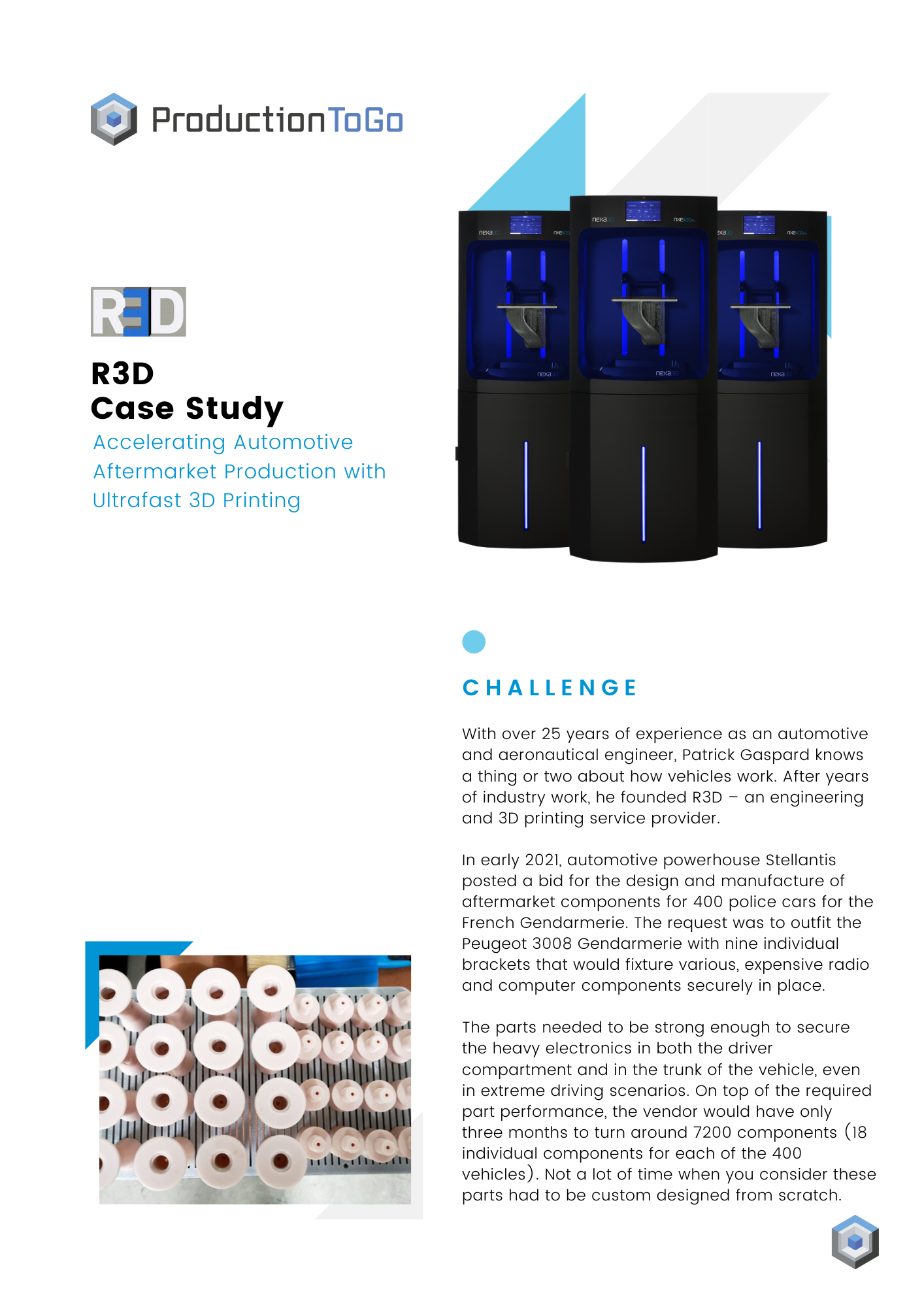3D printers
High quality 3D printers







































|
OPEN HOUSE: ProductionToGo Benelux |
Photos from the event |

|
Nexa3D® Road Show – Cologne (Germany) |
|

|
Nexa3D® Road Show – Munich (Germany) |
|

|
The road to making the right decision for an industrial 3D printer in 2023 |
On-demand webinar |

|
Hoe de effectiviteit van een 3D-printer nog verder vergroot kan worden |
Read more |

|
Additive Manufacturing in Medicine - How 3D Printing can save Lives |
Read more |

|
Additive Manufacturing with Resin - Introduction |
Read more |

|
The possibilities of Additive Manufacturing in the industry |
Read more |

|
How Additive Manufacturing is revolutionizing the automotive industry |
Read more |

|
Product development with the help of 3D printing |
Read more |

|
3D printing and the benefits for aviation |
Read more |

|
Mobility of the future - Additive Manufacturing in the automotive industry |
Read more |
